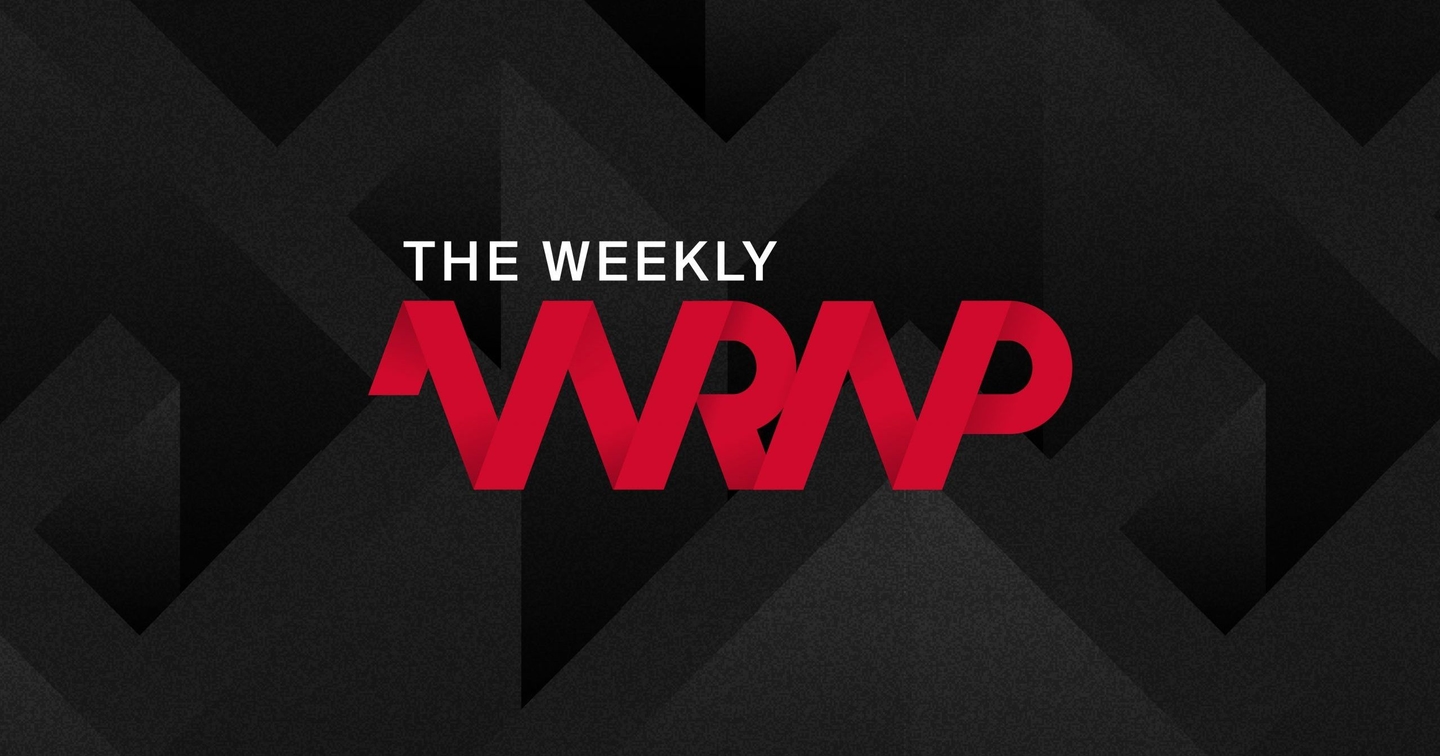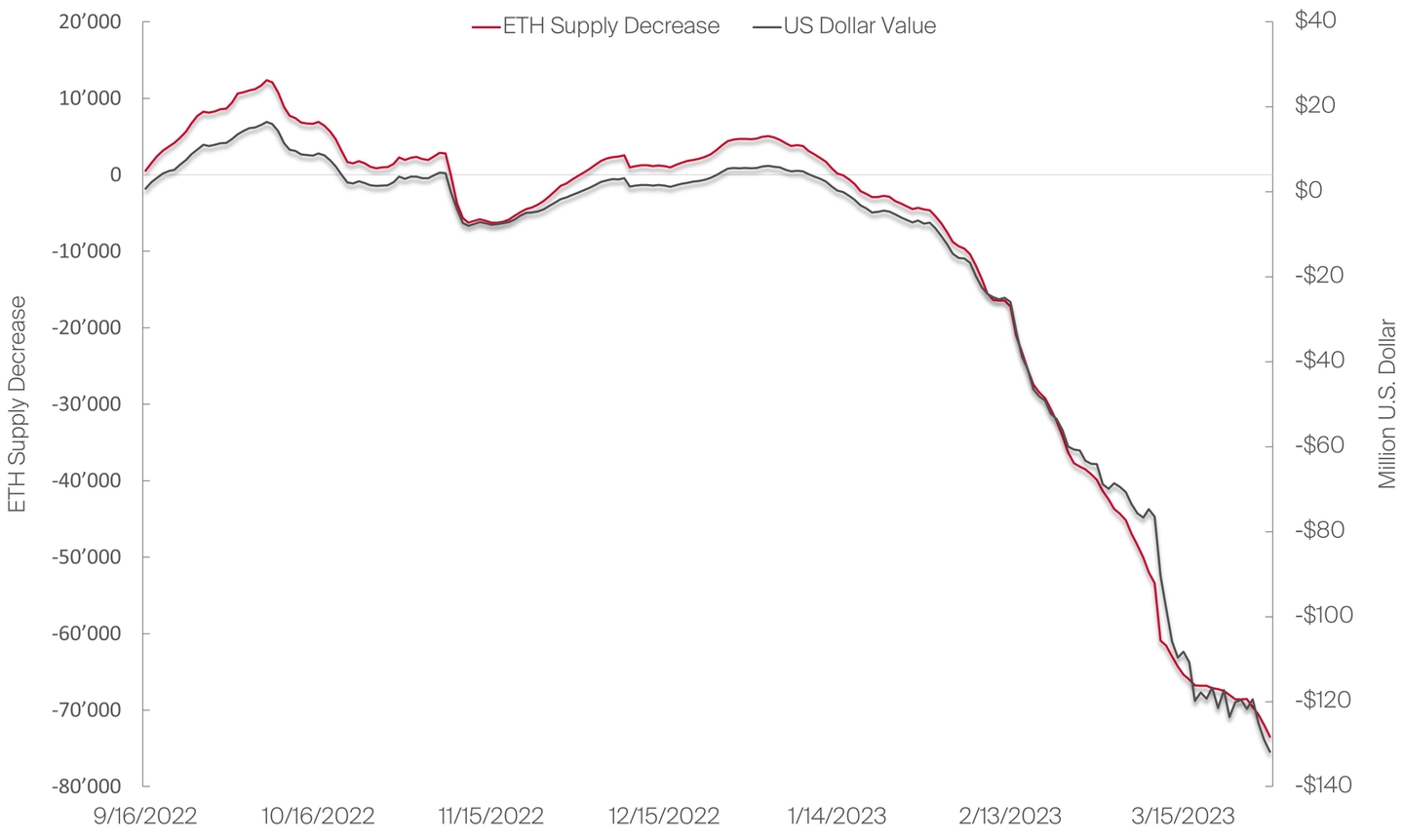
zkEVMs boosting Ethereum, The War on Crypto and How Crypto can decouple

1. Zero-knowledge Ethereum Virtual Machines on the rise
The Facts:
- Zero-knowledge (zk) rollups are a popular scaling mechanism for enhancing the overall transactional throughput of their underlying Layer 1 blockchains, whereas zk Ethereum Virtual Machine (EVM) rollups enable EVM compatible applications to be launched on the rollup itself.
- Multiple such zkEVMs have been launched by notable players in the recent time, such as ConsenSys’ Linea public zkEVM testnet, Polygon’s zkEVM and Matter Labs own zkSync Era.
- Following Arbitrum’s generous ARB token airdrop, with an average airdrop being worth roughly $2’700, potential airdrops by Layer 2 and zk rollup providers are much anticipated amongst many crypto enthusiasts, seeing the respective rollups’ deposit and bridging address activities spike tremendously over the past week.
Our Take:
- Layer 2s and zk rollups are an important vehicle to leverage the full potential of a Layer 1 blockchain, mitigating most of its inherent scaling limitations, enabling cheaper and faster transactions.
- The benefit of rollups is that the underlying blockchain does not have to sacrifice decentralization or security, while the rollup enables the improvement of the third variable in the blockchain trilemma, scaling, enabling fast and efficient transactions.
- The recent and most anticipated launches are all native to Ethereum, and being EVM compatible zk rollups they allow for the easy interoperability between Layer 2 rollup and Layer 1 main chain activity.
- Consequently, the ease of deploying cheaper and more efficient applications on a Layer 2 zkEVM, which becomes fully accessible on Ethereum’s Layer 1, will boost adoption and improve current user experiences.
- Given that Ethereum is the largest Layer 1 by far as of now, the boost to its adoption through multiple zkEVMs is likely to solidify its position as the leading Layer 1.
- The fundamentals for a bright future for Ethereum Layer 2s and Ethereum itself are strong, and coupled with the Shapella update being confirmed for the 12th of April, which will enable the unlocking of staked ETH, there is significant potential for sustained upwards momentum of adoption and consequently price action of ETH.
Plotting ETH Supply decrease since The Merge

2. The War on Crypto
The Facts:
- The coordinated war on crypto, also being labelled Operation Chokepoint 2.0, is happening in plain sight, contrary to the first Operation Chokepoint which got uncovered in hindsight while being openly declared by U.S. regulators and policy makers.
- Initially it has only been the crypto industry itself that called out the war on crypto, but now renowned law firm Cooper & Kirk issued a White Paper, where they outline exactly how federal regulators are acting “arbitrarily and in capricious fashion” against the crypto industry, while the agencies fail to justify and explain the reason for their harsh stance against the crypto industry.
- The report outlines in more than 30 pages how the current administration, alongside U.S. agencies, act “unlawful and unconstitutional” in a coordinated, and similar systemic fashion as during Operation Chokepoint, against the crypto industry, with their committed acts violating the Due Process Clause.
- An example is how not only crypto businesses, but even its employees are losing their access to banking services, or being denied in the first place, without explanation or due process.
- Regulators are furthermore labelling crypto businesses as a threat to the financial system, bank liquidity and as enabling fraud and misinformation, with their current actions against the crypto industry being clearly labelled as statutory overreach by the report.
Our Take:
- It is certainly a much-welcomed tailwind and support for the crypto industry, having a notable law firm speaking out and analyzing in detailed manner the arbitrary actions taken against the crypto industry by U.S. regulatory bodies and the agencies.
- The report summarizes much of what has been in the spotlight in the recent news coverage, including our Weekly Wraps [1] and [2], documenting the ongoing scrutiny the industry faces.
- On a positive note, the report clearly outlines, which rights have been violated, clear action steps for the U.S. Congress to take against Operation Chokepoint 2.0, and how affected businesses and individuals might “fight back” the unlawful actions.
- Current actions undertaken in the U.S. are clearly targeted at pushing the crypto industry out of the financial system, attempting to stop its adoption and “threat” to the existing U.S. Dollar and U.S. financial system dominance.
- Amidst the crackdown on crypto SEC chair Gensler is seeking an astonishing budget of 2.4 billion U.S. Dollar to “address misconduct in the crypto space” – the SEC’s budget request has to be set into proportion with the FINMA’s annual budget of around 150 million U.S. Dollars.
- Overall, it is plausible that the U.S. started Operation Chokepoint in the first place, because crypto disintermediates not only the large U.S. financial sector, but also facilitates the de-dollarization and threatens the reserve currency status of the U.S. Dollar.
- Nevertheless, the trend away from the current U.S. dominance is ongoing besides crypto already, as various countries started to settle trade, especially oil and liquid natural gas (LNG) trades in Chinese Yuan recently, including Saudi Arabia, France and Russia.
- Crypto will follow this trend very likely, if the current arbitrary headwinds from U.S. regulators will continue, as it is not bound to a currency, or geopolitical region, which has been shown by the recent increase in crypto adoption, despite the partially unlawful unbanking of the crypto industry in the U.S.
- Going forward, it is currently unclear, how the situation will play out in the U.S., however it is very likely that the current trend of crypto adoption and de-dollarization will continue, with a probable outcome being that crypto adoption and growth remain.
2.4 billion U.S. Dollars
The annual budget that Gary Gensler requested for the SEC, in order to combat crypto.
Our firm successfully challenged Operation Choke Point, and it was brought to a halt. The current bout of regulatory overreach against the crypto industry is illegal for much the same as reason as its predecessor.
Cooper & Kirk, law firm, calling out the ongoing Operation Chokepoint 2.0 of federal U.S. regulators against the crypto industry.
3. What crypto needs to decentralize and decouple from TradFi
The Facts:
- With the recent bankruptcy and partial seizure of the major crypto banks in the U.S. it became clear that for crypto to operate in a fully decentralized manner, it is crucial to have access to sufficient liquidity beyond the TradFi banking system.
- In the past just as now, stablecoins have been one of the most important means for on- and offramp liquidity into the crypto markets, while also enabling transaction settlement in a crypto native manner.
Our Take:
- The important role and necessity for stablecoins became evident recently, and it is crucial for the crypto industry to have them at its disposal for various reasons.
- Not only are stablecoins generally faster and more cost efficient in settling value almost instantly and permissionless around the globe without business hour restrictions.
- Stablecoins are also an enabler of truly decentralized liquidity provision for the crypto ecosystem, while being also largely unaffected by the recent banking crises and fallout.
- However, the downside to the currently most popular forms of issued stablecoins is their underlying dependency on a centralized entity, susceptible to the risks of TradFi and the backing assets.
- The most viable alternative, that will allow crypto to truly decouple from TradFi would be the creation of a sustainably stable and scalable decentralized stablecoin, of which almost all projects failed in the past, unfortunately, notably amongst them Terra’s UST stablecoin.
- Especially in the current financial and economically stringent times, it remains paramount for the crypto industry, to not lose further access to stablecoins, which is why Circle’s partnership with a new banking partner, or Tether being situated outside U.S. jurisdiction is a favorable situation in the interim.
- Going forward, an increase in solid, and “stable” stablecoins available, with a shift towards truly decentralized stablecoins will most likely be another boost for adoption and growth of the crypto industry, while decoupling and “de-risking” from TradFi and geopolitical risks.
In other news
- SEC forced crypto exchange Beaxy to shut down its business (via Cryptoslate)
- Signature’s clients forced to close crypto accounts (via Cointelegraph)
- Euler hacker returns majority of exploited funds (via Blockworks)
- The effect of the CFTC’s lawsuit for the Binance-Voyager acquisition (via Decrypt)
- Largest LATAM e-commerce platform enables Bitcoin purchases (via Bitcoin Magazine)
Missing the fundamentals? Read our introduction to “What is KILT and the KILT Protocol”
Our statement on the Credit Suisse Crash and the Case for Crypto.
Curious what the year 2023 will look like? Read our 2023 Outlook, which has been published recently.
The latest episode of Decrypt titled “The Shanghai Upgrade and what is means for investors” focusses on the upcoming Ethereum upgrade dubbed Shanghai/Capella and its possible volatility implications. Will we see a bullish unlock?